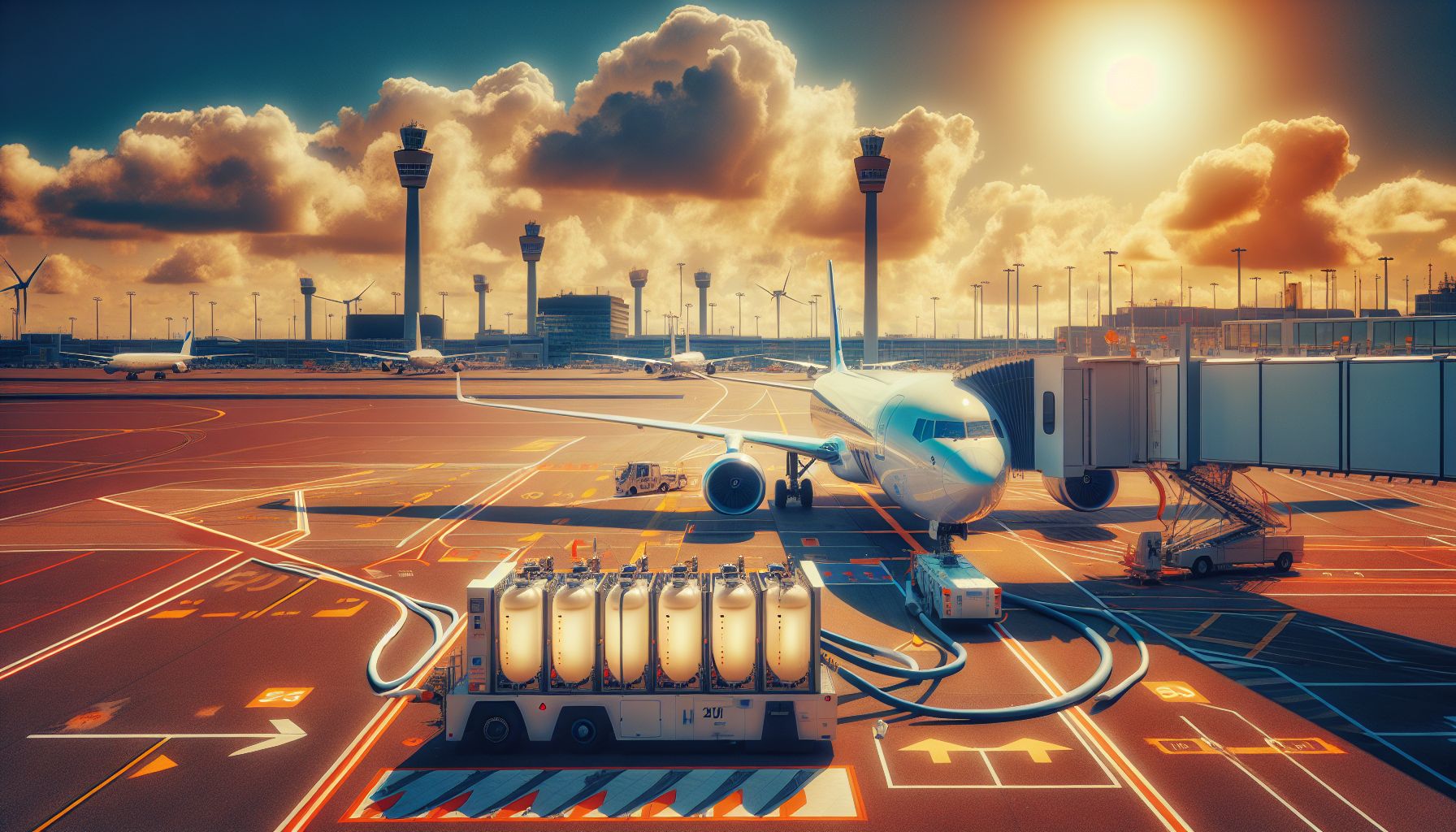Schiphol Pioneers World's First Hydrogen-Powered Aircraft GPU

Amsterdam, Tuesday, 6 August 2024.
Amsterdam’s Schiphol Airport breaks new ground in sustainable aviation, testing the world’s first hydrogen-powered Ground Power Unit. This innovative technology aims to reduce carbon emissions and improve efficiency in aircraft ground operations, marking a significant step towards Schiphol’s 2030 emission-free goal.
Innovative Collaboration for a Sustainable Future
The hydrogen-powered GPU, known as the H2-GPU, is being utilized to supply KLM Cityhopper aircraft on the apron with electricity for essential functions such as lighting and cockpit power. This world-first initiative is part of the TULIPS partnership, which was initiated by Schiphol and co-funded by the European Commission. The collaboration includes several key players in the aviation industry, including ground handling companies and the hydrogen technology developers Zepp.solutions from Delft and Austrian GPU manufacturer Dynell.
Advantages of Hydrogen Over Electric GPUs
While electric Ground Power Units (e-GPUs) are already in use at Schiphol, they require movement to special charging points, causing operational delays. The new H2-GPU can be refueled on-site by a tanker truck, saving significant time and reducing vehicle movements. Additionally, the capacity of e-GPUs is sometimes insufficient, necessitating the use of diesel GPUs. The H2-GPU addresses these limitations by providing a cleaner and more efficient power source. Its ability to be refueled quickly and on-site represents a notable advancement in ground power technology.
Environmental and Operational Impact
The introduction of the H2-GPU aligns with Schiphol’s broader environmental goals, including achieving emission-free ground operations by 2030. Sybren Hahn, Executive Director of Infrastructure at Schiphol, highlighted the importance of continuous innovation and improvement in contributing to better air quality for both employees and the local environment. The hydrogen GPU’s use of green hydrogen, produced without CO2 emissions using electricity from renewable sources like wind and solar, further underscores its environmental benefits.
Broader Implications for the Aviation Industry
The successful implementation and testing of the H2-GPU at Schiphol could serve as a model for other airports worldwide. The TULIPS project, coordinated by Schiphol and involving 33 European aviation parties and knowledge institutes, is focused on accelerating the sustainability of airport operations. This includes not only the development of hydrogen GPUs but also large-scale production of Sustainable Aviation Fuel (SAF), sustainable energy storage solutions, and circular material usage. These initiatives align with the EU Green Deal’s objectives, aiming for a comprehensive reduction in aviation-related emissions.
Future Testing and Development
The pilot project at Schiphol is just the beginning. Testing of the hydrogen GPU will continue at other locations, including Torino Airport in Italy and Larnaca International Airport in Cyprus, to gather additional data on the unit’s endurance and performance in different climates. Michael Brandstötter, Head of Sales and Marketing at Dynell, emphasized the importance of hot and cold climate testing to address potential challenges in extreme temperatures. This ongoing evaluation will help refine the technology, ensuring its reliability and efficiency across diverse operational environments.

